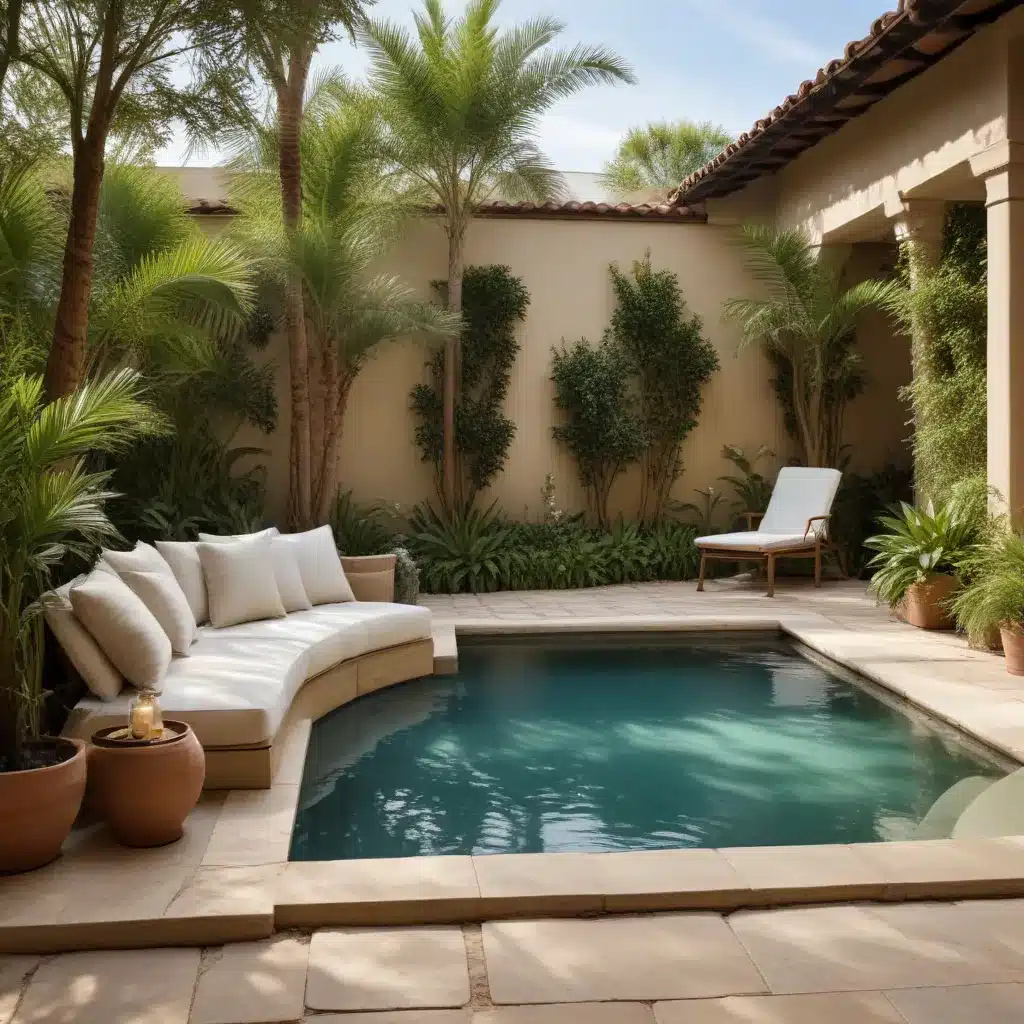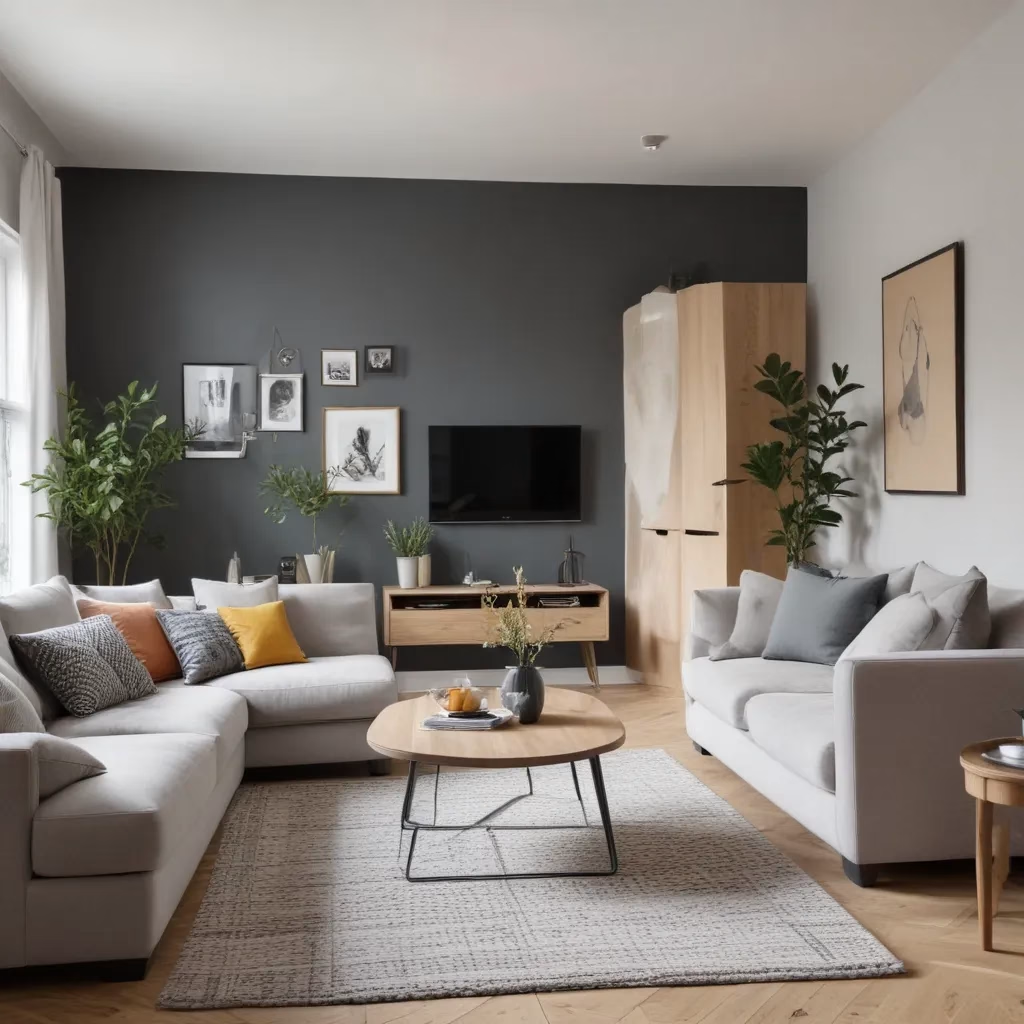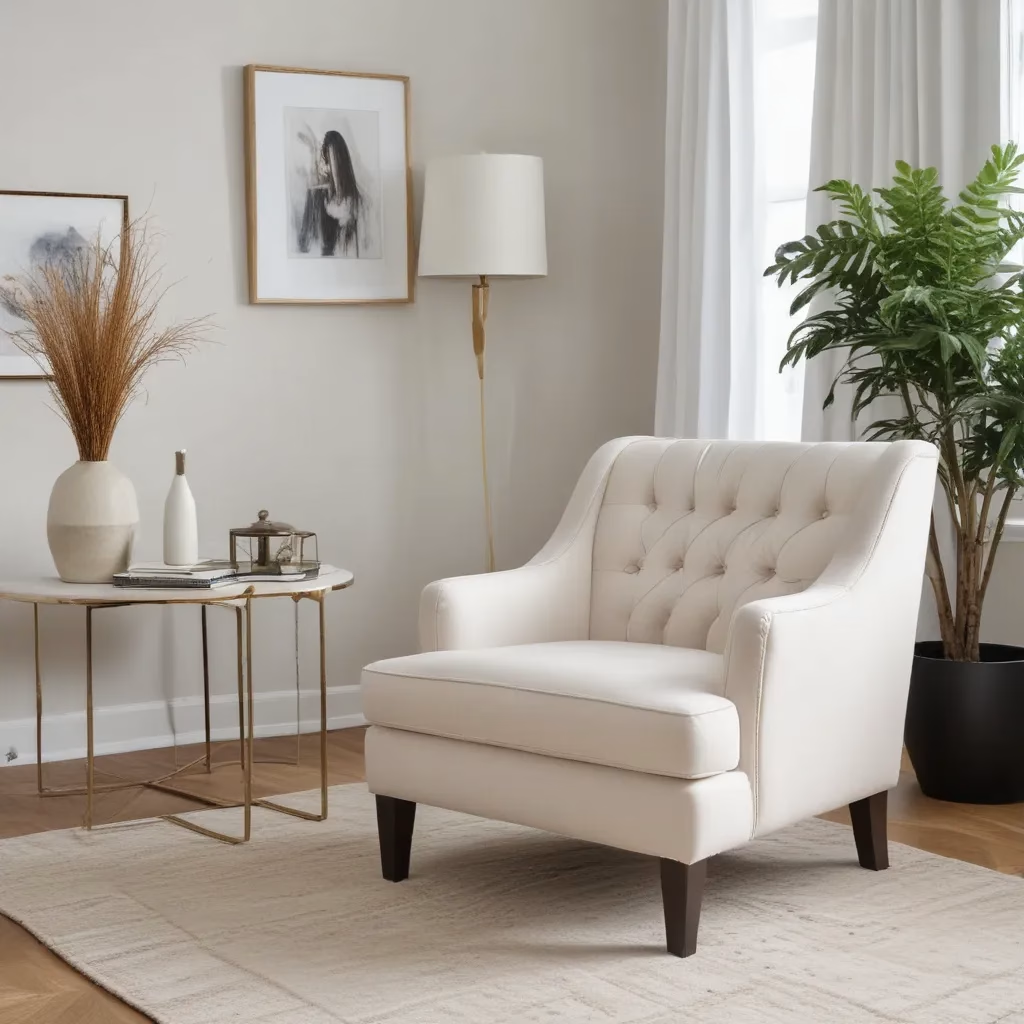
The Art of Crafting a Relaxing Living Space
In today’s fast-paced world, the importance of creating a peaceful sanctuary within our homes has never been more apparent. As we enter September 2024, UK homeowners are increasingly focusing on transforming their living rooms into havens of tranquility. The cornerstone of this transformation often lies in selecting the perfect sofa – a piece that not only complements your décor but also provides the ultimate comfort for unwinding after a long day.
Creating a relaxing atmosphere goes beyond just choosing the right furniture. It involves a holistic approach to design, incorporating elements that appeal to all the senses. From the visual aesthetics of your space to the textures that surround you, every detail plays a role in crafting an environment conducive to relaxation.
One of the key trends we’re seeing in the UK is a move towards simplicity and minimalism in living room design. This doesn’t mean stark or cold interiors, but rather a thoughtful curation of elements that promote calm and reduce visual clutter. Neutral colour palettes, natural materials, and well-chosen accent pieces are coming together to create spaces that feel both sophisticated and soothing.
Choosing the Perfect Sofa for Your Oasis
The sofa is often the centrepiece of any living room, and selecting the right one is crucial for creating your perfect relaxation zone. When shopping for a new sofa, consider these key factors:
-
Size and Scale: Ensure your sofa fits comfortably in your space without overwhelming it. Measure your room and doorways carefully before making a purchase.
-
Comfort: Test out different styles to find the level of support and cushioning that suits you best. Remember, comfort is subjective, so what works for one person may not work for another.
-
Style: Choose a design that complements your overall décor. Whether you prefer classic lines or modern shapes, your sofa should enhance your room’s aesthetic.
-
Durability: Consider the fabric and frame construction. A high-quality sofa is an investment that should last for years.
-
Functionality: Think about how you’ll use the sofa. Do you need a sleeper sofa for guests? Or perhaps a reclining feature for ultimate relaxation?
Popular Sofa Styles in the UK
As of September 2024, several sofa styles are trending in UK homes:
-
Modular Sofas: These versatile pieces allow for customization and can be rearranged to suit different needs and spaces.
-
Mid-Century Modern: Clean lines and tapered legs continue to be popular, offering a timeless appeal.
-
Chesterfield: This classic British style remains a favourite, now updated with modern fabrics and colours.
-
Low-Profile Sofas: Sleek, low-slung sofas are gaining popularity, especially in contemporary interiors.
-
Curved Sofas: Organic shapes are making a comeback, adding softness to living spaces.
Materials Matter: Choosing the Right Fabric for Your Sofa
The fabric you choose for your sofa can significantly impact both its appearance and longevity. Here’s a comparison of popular sofa materials available in the UK market:
| Material | Durability | Maintenance | Comfort | Best For |
|---|---|---|---|---|
| Leather | High | Easy | Firm | Long-term use, families |
| Linen | Medium | Moderate | Soft | Formal living rooms |
| Velvet | Medium | Moderate | Plush | Luxury feel, no pets |
| Microfibre | High | Easy | Soft | High-traffic areas, families |
| Wool | High | Moderate | Warm | Cosy environments |
When selecting a fabric, consider factors such as:
- Durability: If you have children or pets, opt for sturdy fabrics that can withstand wear and tear.
- Maintenance: Some fabrics require more care than others. Consider how much time you’re willing to spend on upkeep.
- Comfort: The texture of the fabric can affect how comfortable the sofa feels.
- Aesthetics: Choose a fabric that complements your overall décor and personal style.
Colour Psychology in Relaxation Spaces
The colours you choose for your living room can have a significant impact on the overall mood and atmosphere. In 2024, UK interior designers are favouring colours that promote relaxation and well-being. Here are some popular choices:
-
Soft Blues: Known for their calming effects, light blue hues can create a serene atmosphere reminiscent of clear skies and tranquil waters.
-
Warm Neutrals: Beige, taupe, and soft greys provide a versatile backdrop that can make a space feel cosy and inviting.
-
Muted Greens: Sage and olive tones bring a touch of nature indoors, promoting a sense of balance and harmony.
-
Pale Pinks: Soft, blush tones can add warmth to a room without being overpowering, creating a soothing ambiance.
-
Earth Tones: Rich browns and warm terracottas can ground a space and create a sense of stability and comfort.
When selecting colours for your relaxation space, consider using a combination of these hues. You might choose a neutral base for larger pieces like your sofa, then add accents in calming blues or greens through cushions, throws, or artwork.
Lighting: Setting the Mood for Relaxation
Proper lighting is essential in creating a relaxing atmosphere. In 2024, UK homeowners are moving away from harsh overhead lighting in favour of softer, more layered approaches. Consider these lighting tips:
-
Use Dimmable Lights: Install dimmer switches to adjust the brightness according to your mood and the time of day.
-
Incorporate Task Lighting: Add reading lamps or floor lamps near seating areas for focused illumination when needed.
-
Experiment with Ambient Lighting: Use wall sconces, table lamps, or even string lights to create a warm glow throughout the room.
-
Consider Natural Light: Maximize natural light during the day with sheer curtains or blinds that can be easily adjusted.
-
Try Smart Lighting: Smart bulbs allow you to control colour temperature and intensity, helping you create the perfect ambiance at any time.
Remember, the goal is to create a flexible lighting scheme that can adapt to different activities and moods throughout the day.
The Role of Texture in Creating Comfort
Texture plays a crucial role in making a space feel cosy and inviting. In 2024, UK interior designers are emphasizing the importance of layering different textures to create depth and interest in relaxation spaces. Here are some ways to incorporate texture:
-
Soft Furnishings: Add plush throw pillows, cosy blankets, and soft area rugs to create a sense of warmth and comfort.
-
Natural Materials: Incorporate elements like wooden side tables, woven baskets, or stone accents to bring in organic textures.
-
Wall Treatments: Consider textured wallpaper, wooden panelling, or fabric wall hangings to add visual and tactile interest to your walls.
-
Window Treatments: Choose curtains or blinds in materials that complement your overall texture scheme, such as linen or velvet.
-
Plants: Introduce houseplants to add natural texture and life to your space.
By combining different textures thoughtfully, you can create a rich, layered environment that invites relaxation and comfort.
Maximizing Comfort with Ergonomic Design
As we spend more time at home, the importance of ergonomic furniture has come to the forefront. In 2024, UK furniture designers are placing a greater emphasis on creating pieces that not only look good but also support proper posture and comfort. When selecting furniture for your relaxation space, consider these ergonomic principles:
-
Sofa Height: Choose a sofa with a seat height that allows your feet to rest comfortably on the floor when seated.
-
Back Support: Look for sofas and chairs with good lumbar support to maintain proper spine alignment.
-
Seat Depth: Ensure the seat depth allows you to sit with your back against the backrest while your knees bend at a 90-degree angle.
-
Armrest Height: Armrests should be at a height that allows your arms to rest comfortably without raising your shoulders.
-
Reclining Options: Consider sofas or chairs with reclining features to provide various positions for optimal comfort.
Remember, while aesthetics are important, the functionality and comfort of your furniture should be a top priority in creating a truly relaxing space.
Decluttering for a Peaceful Environment
One of the most effective ways to create a relaxing atmosphere is to minimize clutter. A tidy, well-organized space can significantly reduce stress and promote a sense of calm. Here are some decluttering tips gaining popularity in the UK:
-
Implement the “One In, One Out” Rule: For every new item you bring into your home, remove one existing item.
-
Use Hidden Storage: Opt for furniture pieces with built-in storage, such as ottomans with lift-up lids or coffee tables with drawers.
-
Create a Daily Tidying Routine: Spend 10-15 minutes each day putting things back in their designated places.
-
Digitize Documents: Reduce paper clutter by scanning important documents and storing them digitally.
-
Utilize Vertical Space: Install shelving or use tall bookcases to maximize storage without taking up floor space.
By keeping your relaxation space tidy and organized, you create a visual sense of calm that contributes to overall relaxation.
Incorporating Nature for Added Tranquility
Bringing elements of nature into your living space can significantly enhance its relaxing qualities. In 2024, UK homeowners are increasingly embracing biophilic design – an approach that seeks to connect building occupants more closely to nature. Here are some ways to incorporate natural elements:
-
Houseplants: Add a variety of indoor plants to purify the air and bring life to your space. Popular choices include peace lilies, snake plants, and ficus trees.
-
Natural Materials: Use materials like wood, stone, and bamboo in your furniture and décor choices.
-
Nature-Inspired Art: Hang artwork featuring natural landscapes or botanical prints to create a visual connection to the outdoors.
-
Water Features: Consider adding a small indoor fountain or water wall to introduce the soothing sound of flowing water.
-
Natural Light: Maximize natural light with well-placed mirrors and sheer window treatments.
By incorporating these natural elements, you can create a space that feels connected to the outdoors, promoting a sense of calm and well-being.
The Impact of Scent on Relaxation
The power of scent in creating a relaxing atmosphere should not be underestimated. In 2024, UK homeowners are paying more attention to how different aromas can affect mood and promote relaxation. Here are some popular ways to incorporate soothing scents:
-
Essential Oil Diffusers: Use diffusers with calming essential oils like lavender, chamomile, or ylang-ylang.
-
Scented Candles: Choose natural soy or beeswax candles with relaxing fragrances.
-
Reed Diffusers: These provide a constant, subtle fragrance without the need for heat or electricity.
-
Potpourri: Create your own blend of dried flowers and herbs for a natural, long-lasting scent.
-
Linen Sprays: Use lightly scented sprays on sofas, curtains, and bedding for a fresh, clean smell.
Remember to use scents sparingly, as overpowering fragrances can be counterproductive to relaxation.
Technology and Relaxation: Finding the Right Balance
While technology can sometimes be a source of stress, when used mindfully, it can also enhance our relaxation spaces. In 2024, UK homeowners are finding ways to incorporate technology that promotes rather than hinders relaxation:
-
Smart Home Systems: Use voice-controlled systems to adjust lighting, temperature, and music without disrupting your relaxation.
-
Noise-Cancelling Speakers: Create a peaceful audio environment with high-quality, unobtrusive sound systems.
-
Air Purifiers: Improve indoor air quality with quiet, efficient air purifiers.
-
E-readers: Enjoy reading without the clutter of physical books.
-
Meditation Apps: Use guided meditation apps on your smartphone or tablet to enhance relaxation.
The key is to use technology in ways that support your relaxation goals without becoming a distraction.
Creating a Personal Retreat Within Your Home
In 2024, the concept of creating a dedicated relaxation zone within the home is gaining popularity in the UK. This doesn’t necessarily mean having a separate room; rather, it’s about carving out a specific area within your living space dedicated to unwinding. Here are some ideas:
-
Reading Nook: Create a cosy corner with a comfortable chair, good lighting, and a small bookshelf.
-
Meditation Space: Designate a quiet area with cushions or a yoga mat for meditation or gentle stretching.
-
Music Corner: Set up a space with comfortable seating and a quality sound system for listening to soothing music.
-
Art Station: Create a small area for engaging in creative activities like drawing or coloring, which can be deeply relaxing.
-
Green Space: If you have a balcony or window sill, create a mini garden for a connection to nature.
By having a dedicated relaxation area, you signal to your brain that it’s time to unwind when you enter that space.
The Importance of Regular Maintenance
To ensure your relaxation space remains a soothing oasis, regular maintenance is key. In 2024, UK homeowners are adopting these maintenance habits:
-
Regular Cleaning: Establish a cleaning routine to keep your space fresh and inviting.
-
Fabric Care: Follow proper care instructions for your sofa and other upholstered items to maintain their appearance and longevity.
-
Reorganizing: Periodically reassess your space and reorganize as needed to prevent clutter buildup.
-
Refreshing Décor: Update small décor items seasonally to keep your space feeling fresh and aligned with your current tastes.
-
Plant Care: If you have houseplants, establish a regular watering and care routine to keep them healthy.
By maintaining your relaxation space, you ensure it remains a welcoming retreat for years to come.
Personalizing Your Space
While following design trends can be helpful, the most relaxing spaces are those that reflect the individual’s personal tastes and experiences. In 2024, UK interior designers are encouraging homeowners to infuse their personalities into their relaxation spaces:
-
Display Personal Mementos: Showcase items that hold special memories or significance to you.
-
Incorporate Favorite Colors: Even if they’re not traditionally “relaxing” colors, include hues that make you happy in small doses.
-
Feature Personal Artwork: Whether it’s pieces you’ve created or collected, surround yourself with art that speaks to you.
-
Use Meaningful Textiles: Incorporate textiles with personal significance, such as a quilt made by a family member.
-
Create a Photo Wall: Display photos of loved ones or favorite places in a tasteful gallery wall.
Remember, the goal is to create a space that feels authentically you – a place where you can truly relax and be yourself.
Conclusion: Your Path to Perfect Relaxation
Creating a soothing oasis in your home is a deeply personal journey. While trends and design principles can guide you, the most important factor is how the space makes you feel. As you embark on transforming your living area into a haven of relaxation, remember to trust your instincts and choose elements that resonate with you personally.
From selecting the perfect sofa to incorporating calming colors and textures, every decision you make contributes to the overall atmosphere of your space. By thoughtfully considering each aspect – from lighting and scent to organization and personal touches – you can create a truly tailored oasis that provides solace and rejuvenation.
As you put these ideas into practice, you may find it helpful to visit Sofa Spectacular for inspiration and high-quality furniture options that can serve as the foundation of your relaxing space. Remember, the ultimate goal is to create an environment where you can unwind, recharge, and find peace amidst the demands of daily life.
With these guidelines and your personal touch, you’re well on your way to crafting a living space that not only looks beautiful but also feels like a true sanctuary – a place where you can soothe your soul and find perfect relaxation day after day.



